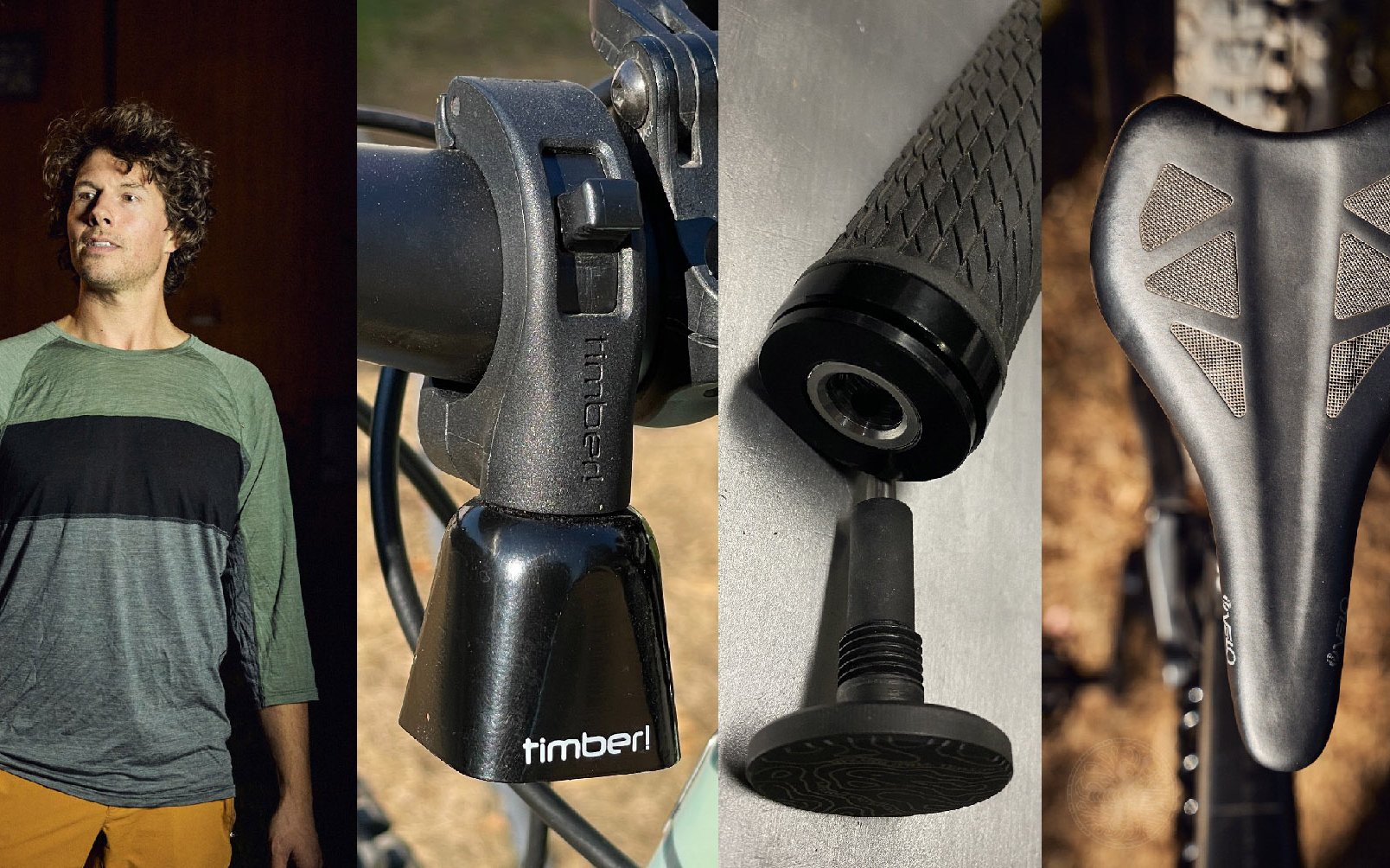
Reviews
Gear Shots September 27, 2022
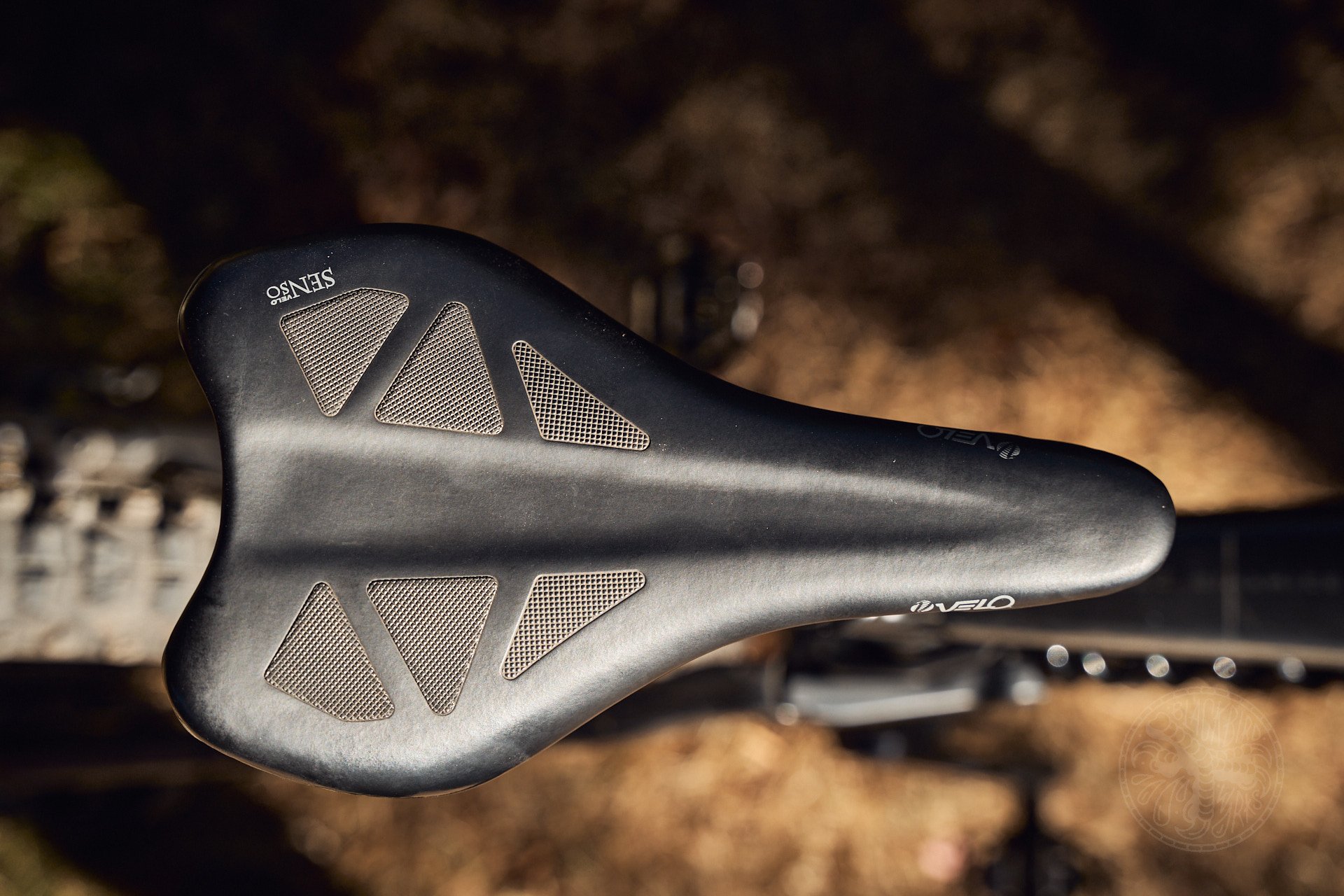
Velo Senso Wilson
Velo Senso Wilson Saddle
The greatest gamble a man will make is to take on a saddle review. The surprise kick in the balls doesn’t come instantly but it's a slow motion anvil drop that seems to find its way to your brain somewhere around the 20km mark on your first ride. So of course I said let's go on a review to the New Velo Saddles Senso Wilson.
Designed specifically for mountain biking, there are 2 widths you can choose from: 133mm and 143mm. I did a sit bone calculation on a gel measuring setup so I know that my narrow sit bones prefer a saddle in the 130-140mm width range. These gel testers are at most bike shops and shop employees love measuring your sit bones on these devices. I recommend you go get a measuring done to have this in hand for the next time you go shopping for a saddle.
My trusted saddle is an Ergon SM E-MTB Comp small. It's got a nice scoopy design with a raised tail in the end and a cushy flat surface with a cut out that just seems to work for me. I am also comfortable on a WTB silverado on longer rides. I guess I should mention that I prefer no chamois for shorter rides around 2 hours and less. I also don’t wear a chamois in the summer to avoid cooking up the eggs a bunch.
The Velo Senso Wilson looks nothing like the Ergon or the WTB. Shorter than both, its shape resembles a road saddle more than it does one for mountain biking.
Our climbs are steep and loose, so I point the front of my saddles down a little to compensate for the steep climbing angles. The Ergon’s kicky tail was helpful for a work around to this down-pointing habit, but the Velo does not have much of a kick so it looks down at my headset setup for general Sea-to-Sky region climbing.
There is a neat cut out on the back for more tire clearance on full bottom outs. I haven’t found that useful on my medium rig but I can see it being super useful on low standover small and XS frames. The textured padding on the saddle is excellent for butt traction.
The Velo Senso Wilson was uneventfully comfortable right of the bat. No adjustments, no chamois necessary. I got along with it famously even without a cutout to relieve pressure for the perineum and scrotum.
I did find that in the wet, my shorts got caught up on the wings of the saddle. Riding the bike off the back with saggy wet shorts is a rare issue but I ripped the crotch of my NF pants after it got caught on the saddle. Doesn’t seem to be an issue in the dry but something to note for wet weather loam entrepreneurs.
65 USD is a great price for a light, comfy saddle with cro-mo rails. It has my vote!
-Deniz Merdano
Velo Senso Wilson Saddle $90 CAD / $65 USD
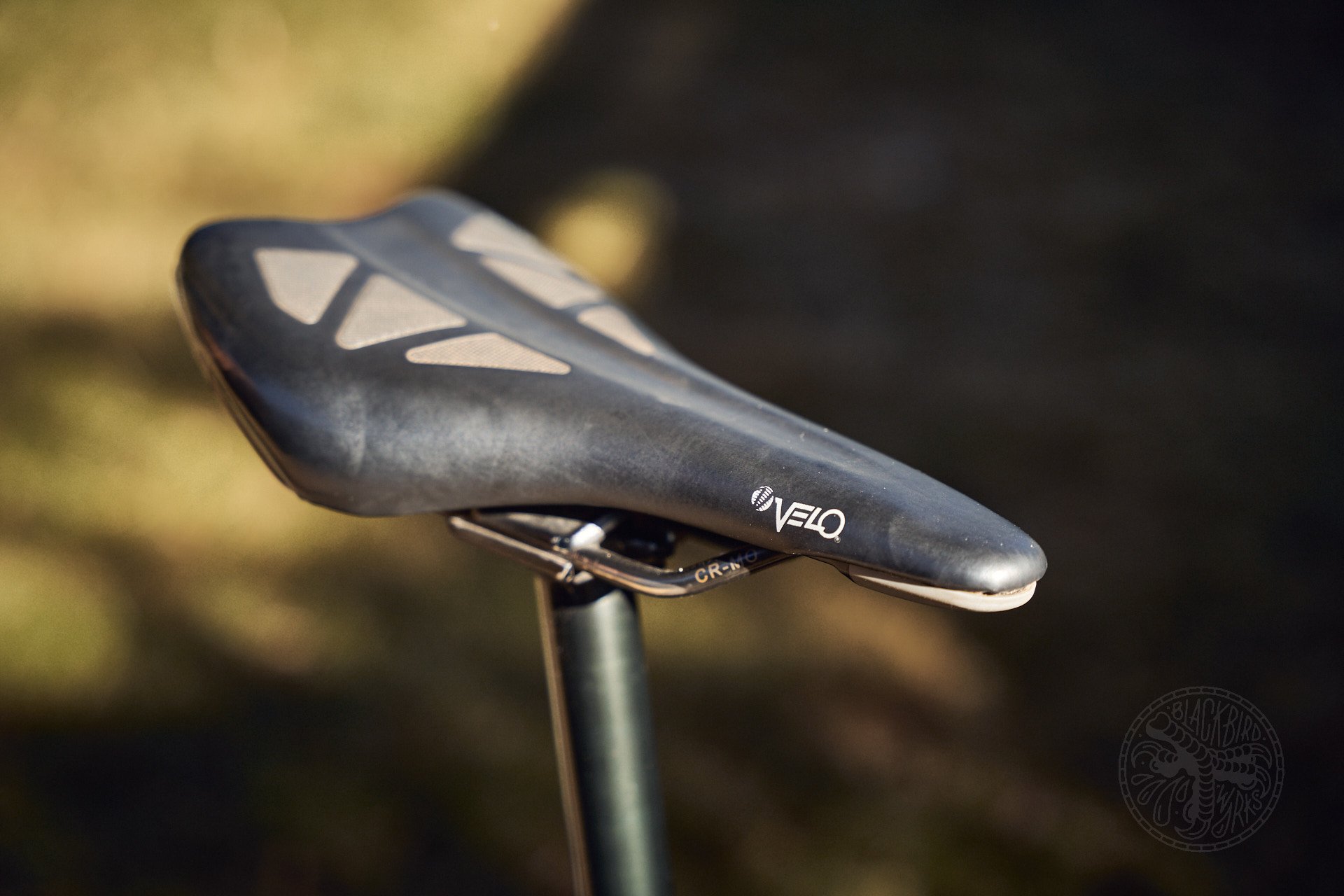
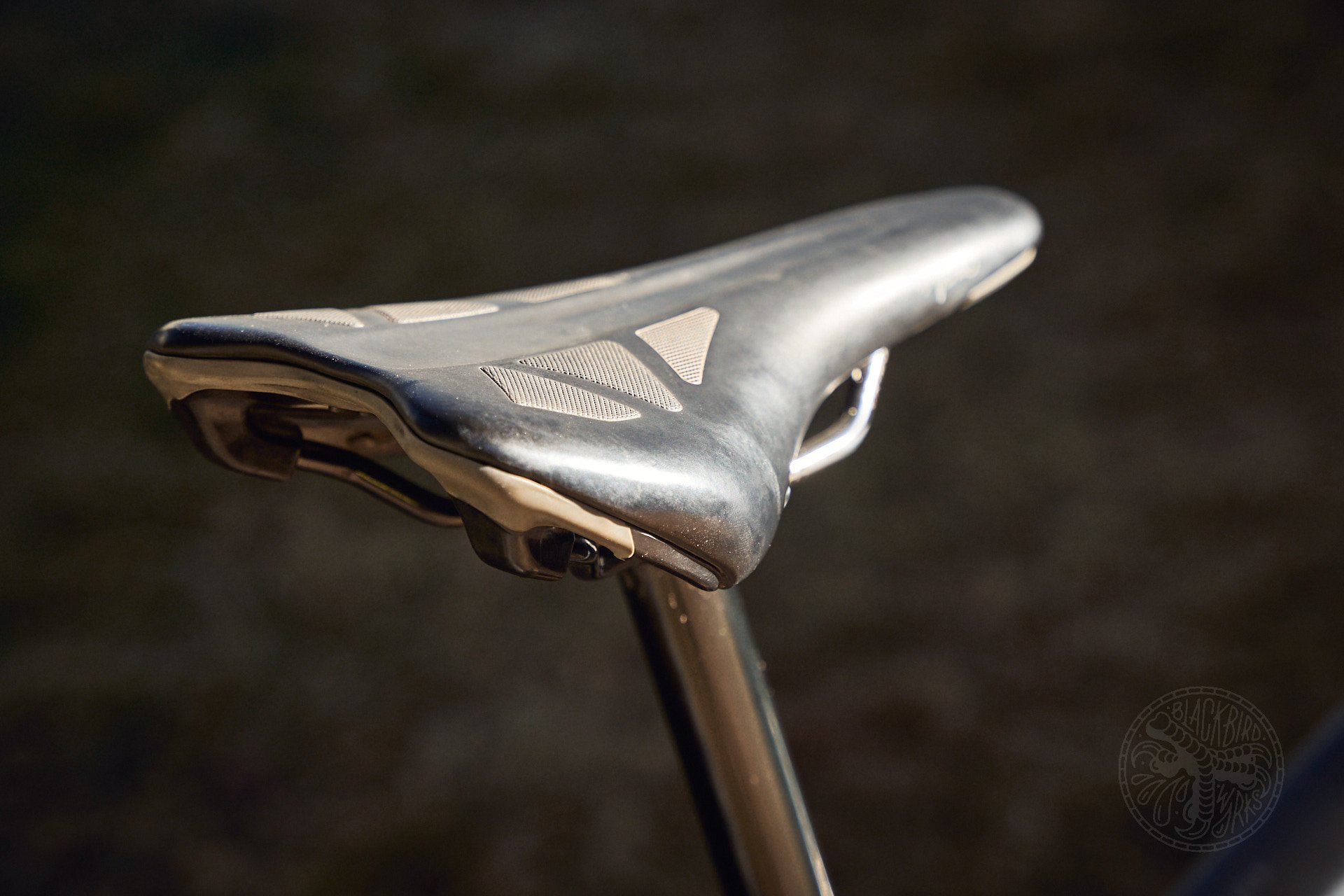
Dynaplug Covert Bar End Plug Tool
Punctures are the bane of every mountain biker's existence. The advent of tubeless has made slapping a tube in mid-ride a more complicated process. Gone are the days of the tool free tire removal and installation and your sidewall will likely be bonded securely to your rim. Inserts, while likely to reduce the incidence of flats, make the process more fraught. If you put a tube in you'll have to either strap your insert to your bike, wear it like a bandolier, or push your valve through the insert before slapping the whole thing back together. If you think installing an insert is challenging at home, try it on the side of the trail with wet cold hands.
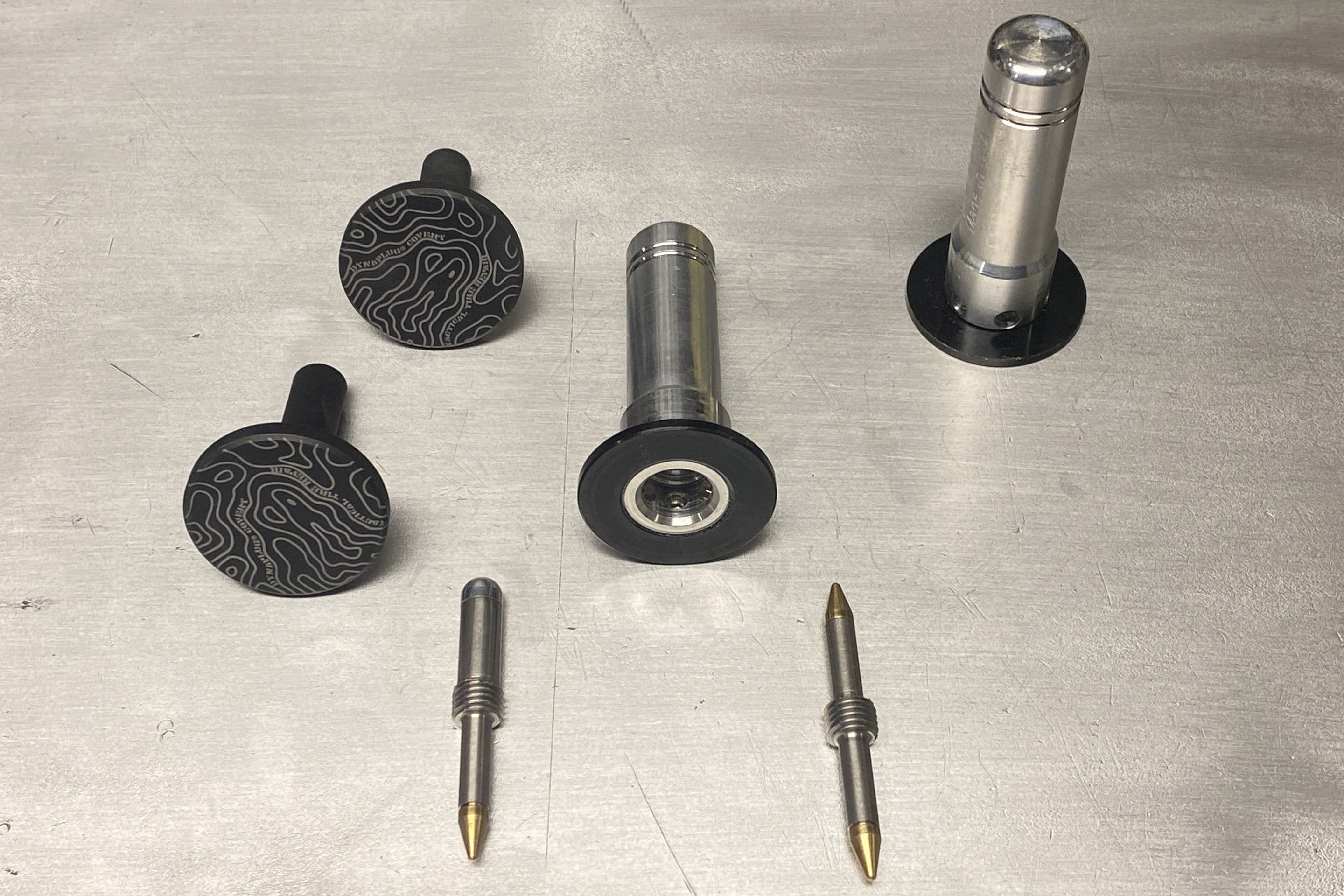
The caps thread securely into the inner housing and hold preloaded dynaplugs.
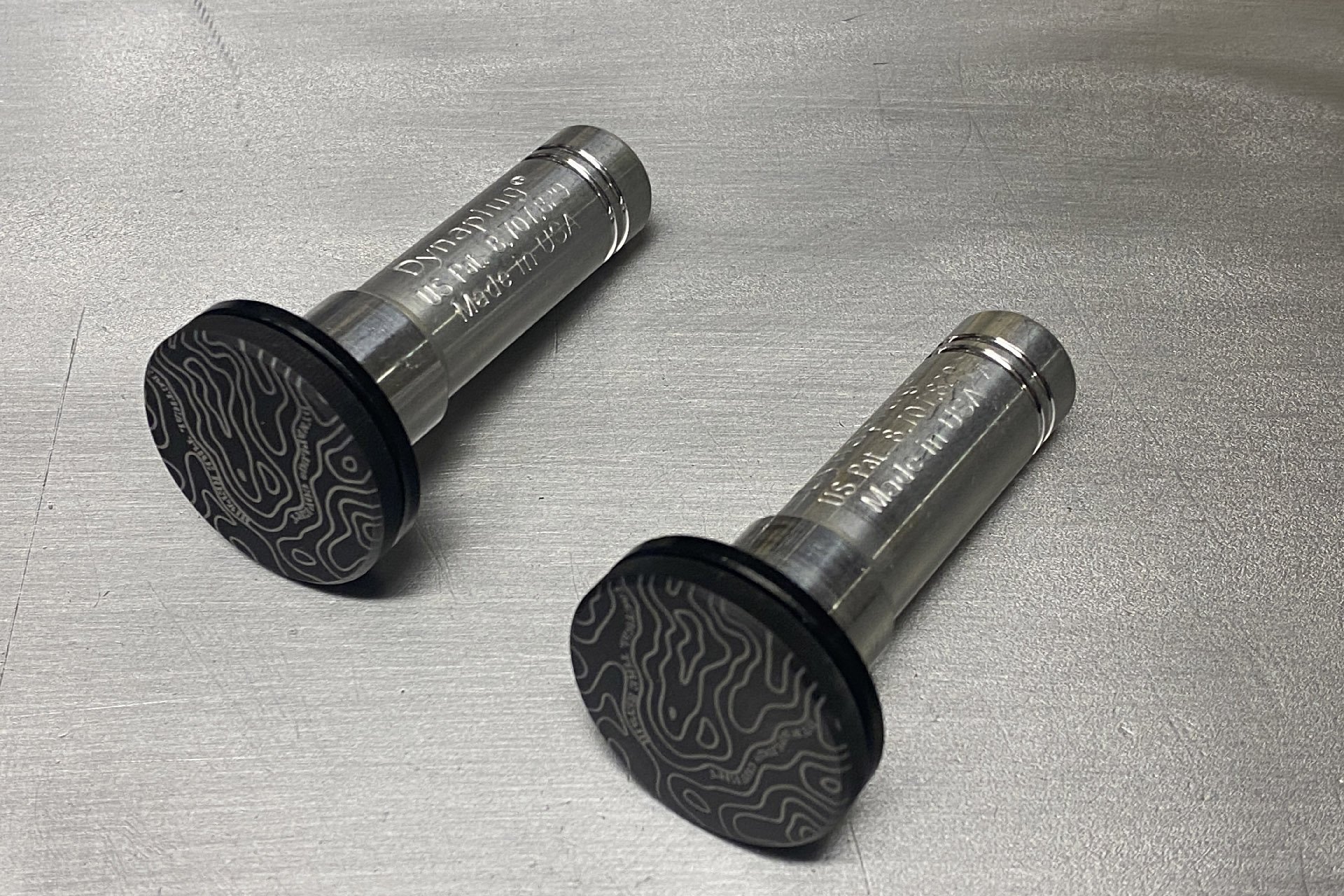
The end caps are treated with Cerakote for durability, just like We Are One frames.
All these factors make plugs your best friend, assuming they work. I've had mixed luck with bacon strips but when they work it's like a miracle; back on your bike without even touching a tire lever. I haven't yet had any experience with Dynaplug, the bullet shaped plugs with a brass tip. I like the concept however, allowing you to cram a nice bit of rubber into a very small hole, but I'm still flying blind. I don't have any half destroyed tires around so that will have to wait until the fateful hisssss occurs. For now, here's the way the tool fits onto your handlebars.
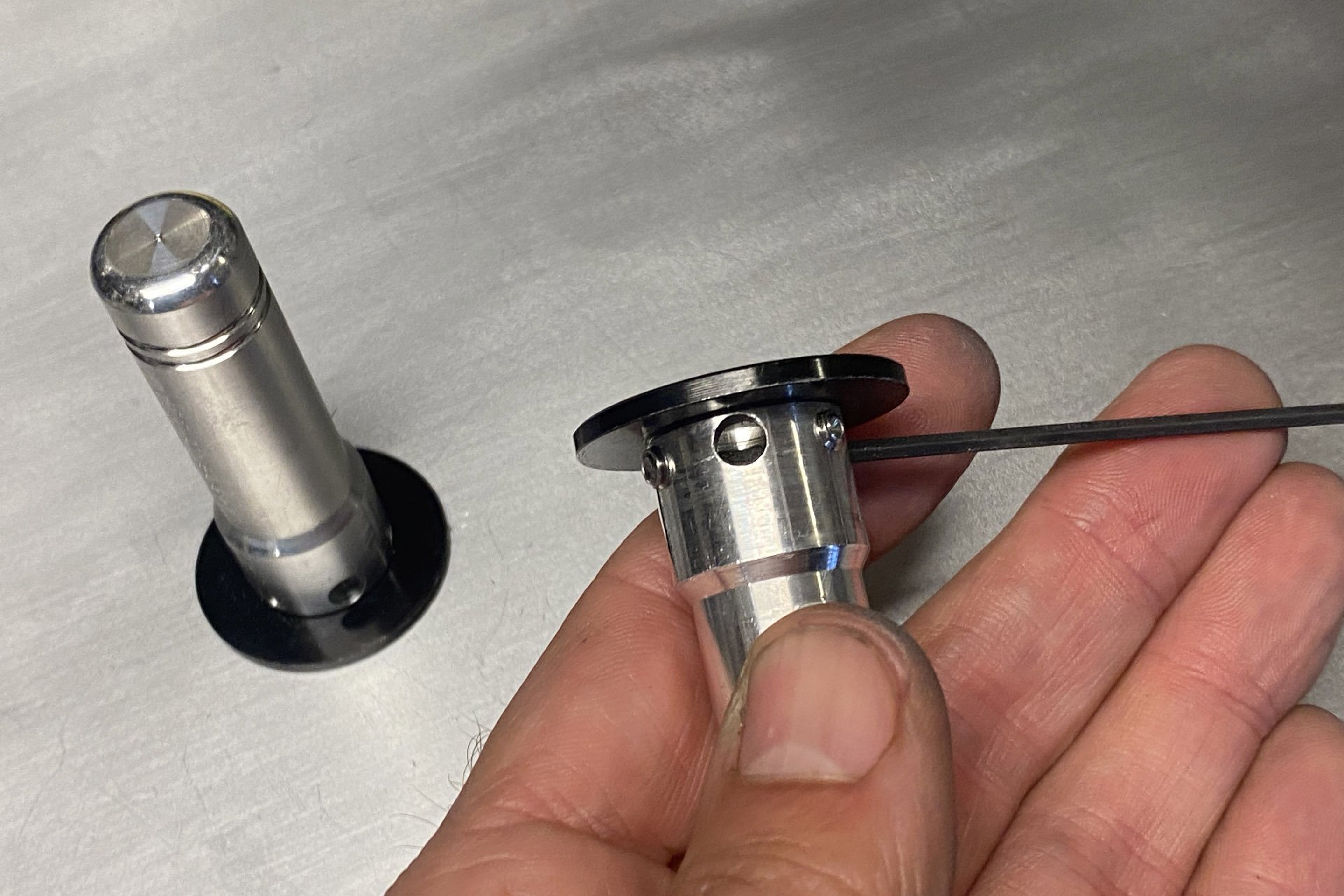
When installing these plugs, it saves time and hassle if you edge the set screws out far enough that they will just squeeze into the inside of your bar.
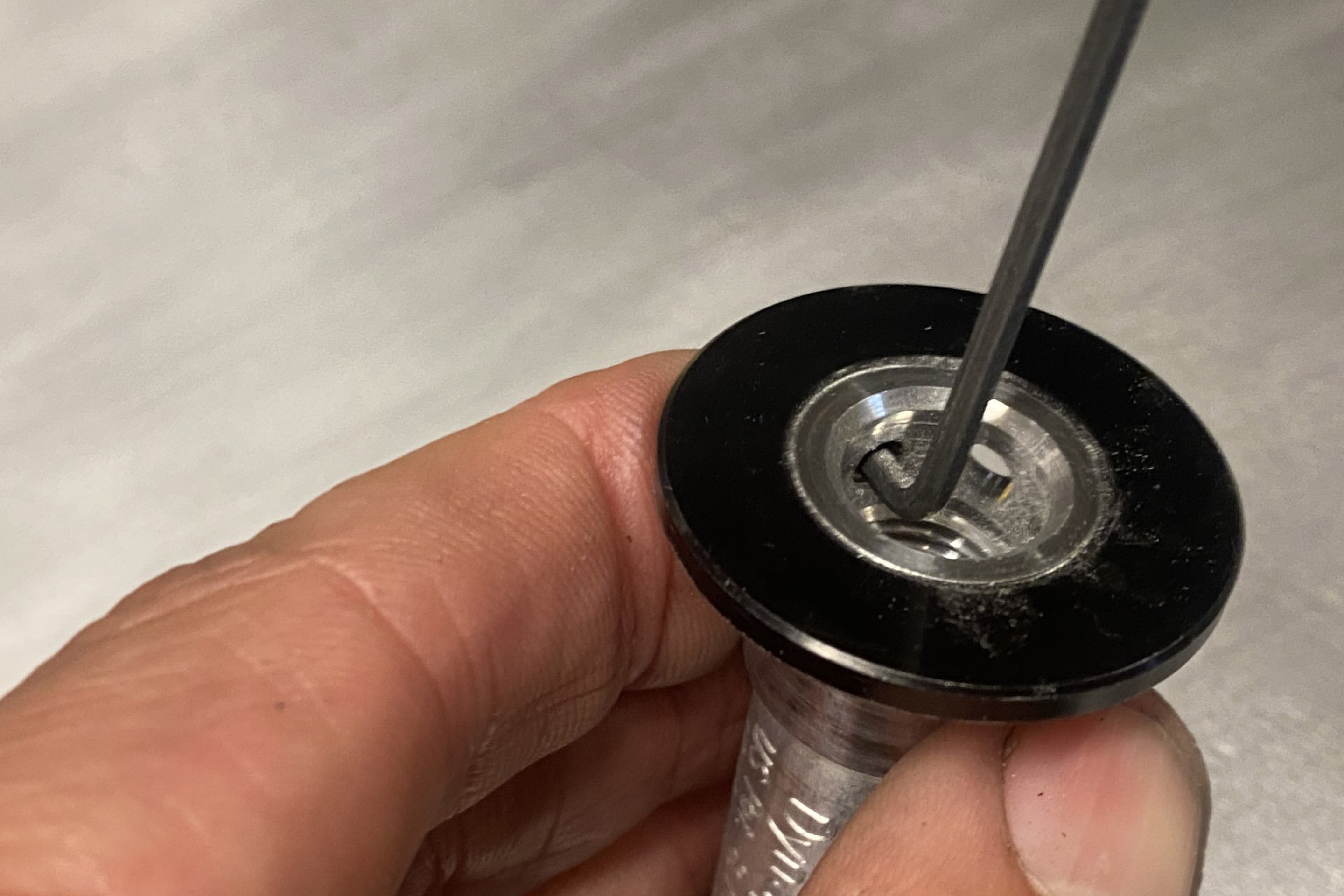
Then you won't need to do too many quarter turns with the modified 5/64 hex key.
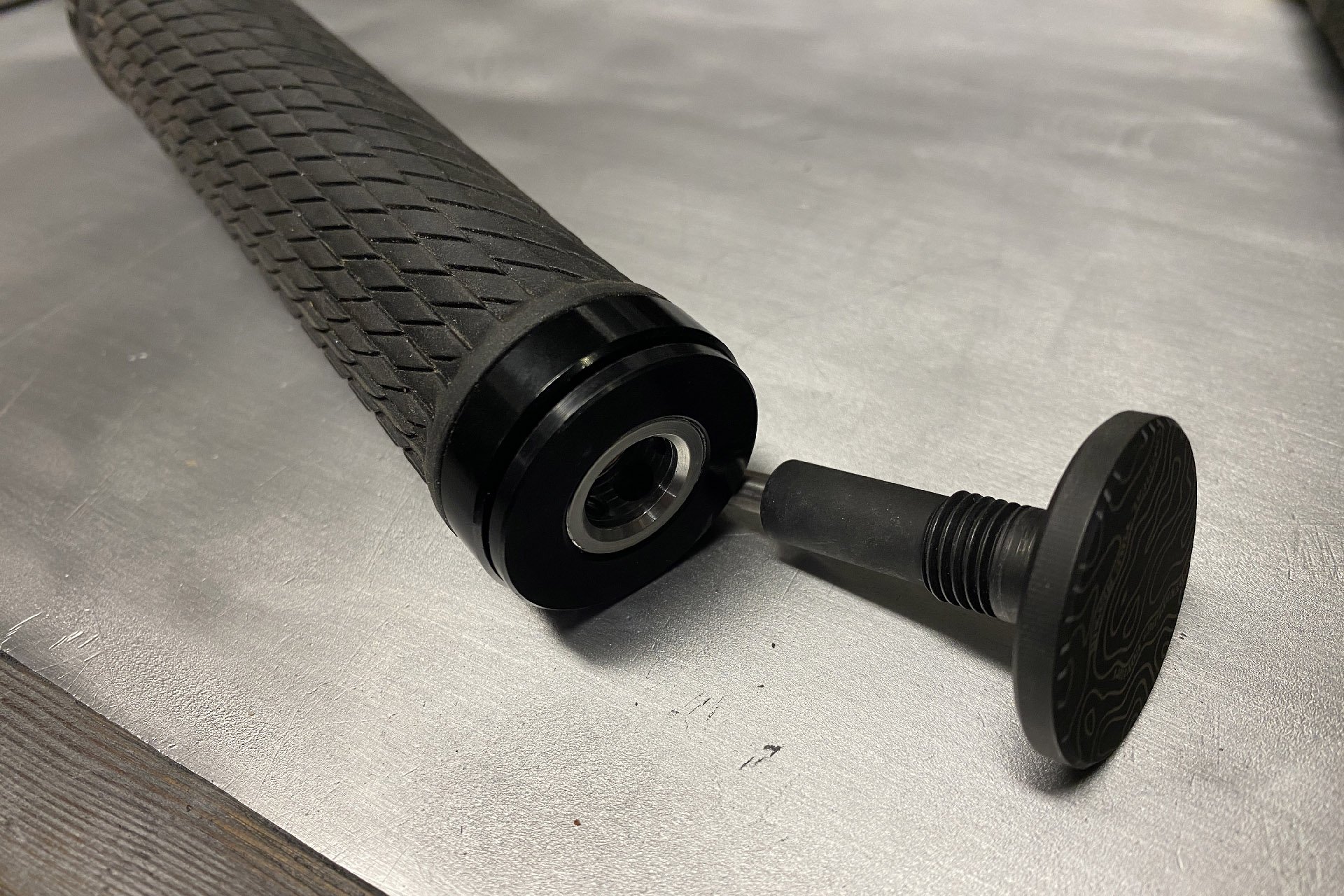
You'll need a bar with an appropriate inside diameter (min ID of 18.42mm/0.725in) and a grip that doesn't cover the end of your bar.
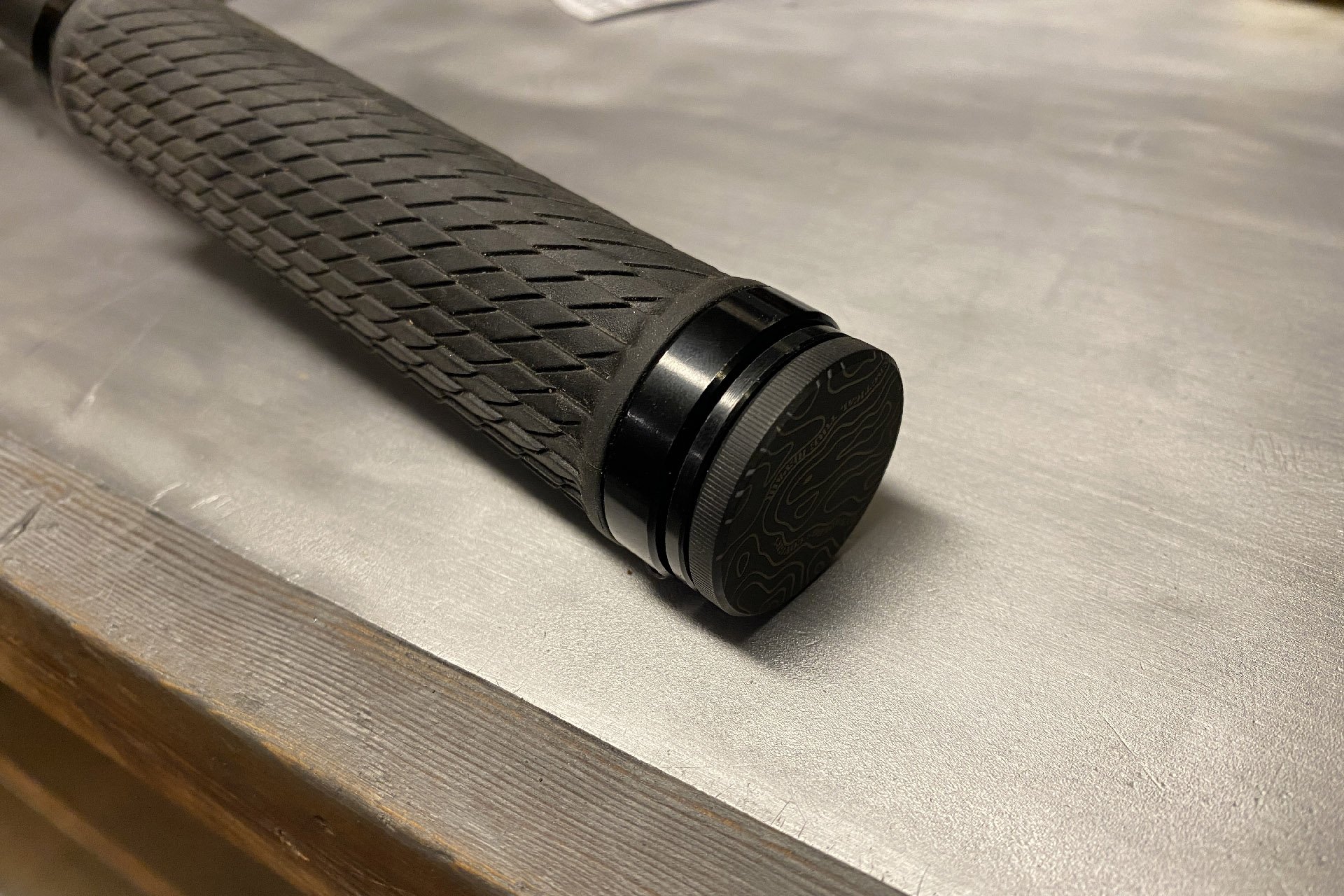
Once that is sorted, everything works as advertised.
The first thing you have to know is that if your grips don't have a hole through the end, you're going to have to make one. Looking around, the majority of bikes these days have just one clamp per grip and they seal off the end of your bars. I found some more traditional lock-ons to use with the Coverts but then I needed to find a bar with the right inner diameter. That turned out to be the OneUp's Carbon E-bar. Installation involves inching the set screws out to the required depth so the inner plugs can just push into the end of the bar. Then you don't need many turns with the modified Bondhus 5/64 hex key, which is a little awkward. When the time comes it can be quickly deployed without removing your gloves.
The Dynaplug Covert system will add around 85 grams to the weight of your bike, and removed 125 USD from your wallet, but it must might get you out of a jam the next time you spring a leak. There's even a drop bar version of the Covert.
-Cam McRae
Dynaplug Covert // 125 USD
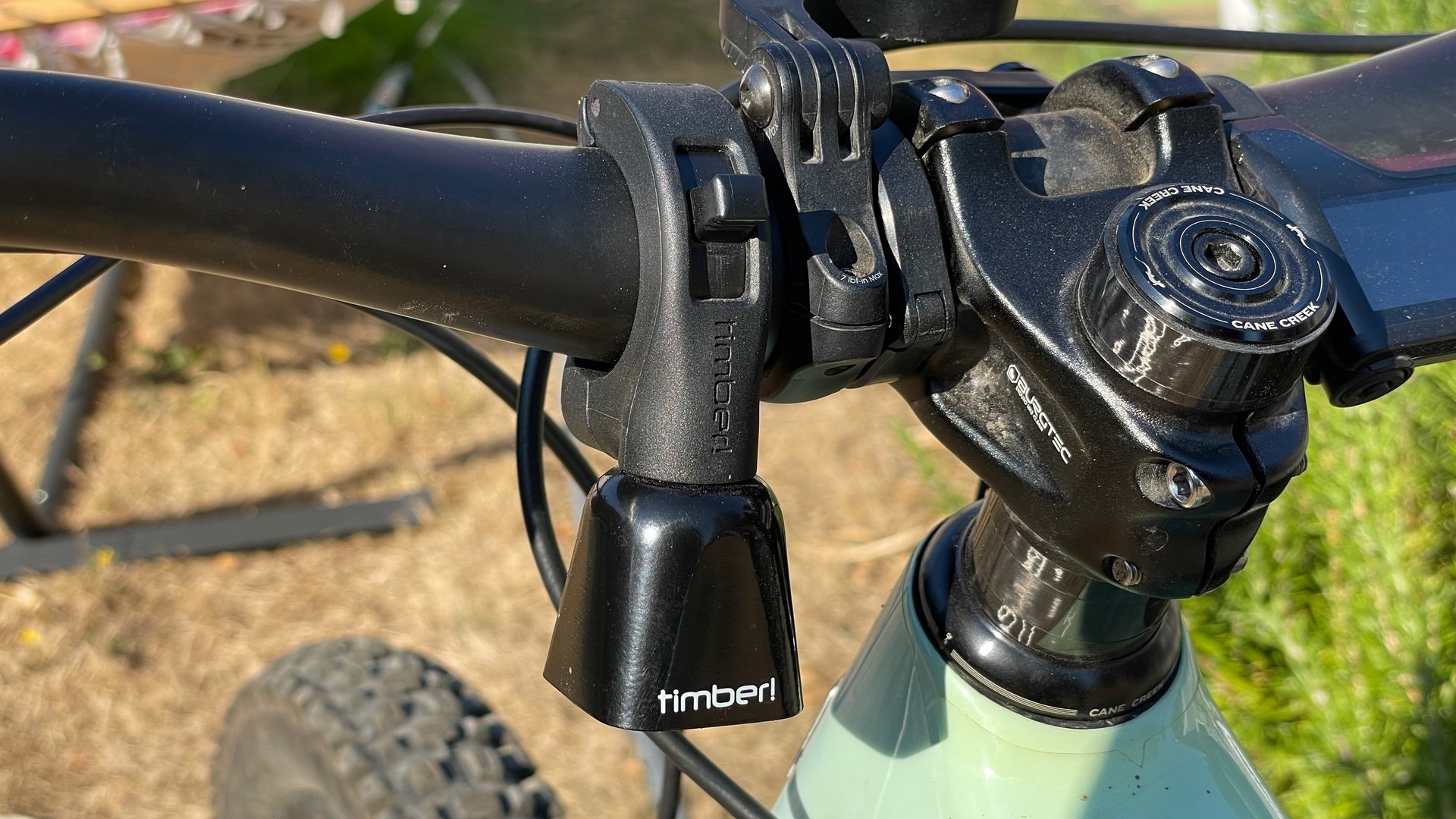
Timber Model Yew! Riding Bell
Moving to a new town means I haven't yet met all the degens who are out riding when they could be working at day jobs or other things responsible people do. This means I've been riding alone a lot, and a few of the lower trails in my new quick loop are on multi-use trails often used by hikers. On my favourite loop there are two sections where I'm routinely traveling over 30 kph, and a few of the corners are semi-blind, meaning that hitting them when riding alone (ie. making less noise than in a group) isn't responsible without alerting possible traffic around the next corner.
Also, the Sunshine Coast is rammed full of blackberry bushes, so when I'm not thinking about hikers, I'm thinking about bears, especially at this time of year. Let's not talk about solo night riding, and cougars...
So, between hikers and bears, I needed a bar-mounted bell, and the Timber caught my eye because it has an on/off clapper controlled by a lever you can easily operate with your thumb while riding. I don't want a bell all the time, I want one I can turn on and off when needed and Timber's bells do that. The Model Yew! is new, and it fits all bar diameters including 35mm, and is the most robust of Timber's bells.
It attaches quickly and simply with a 3mm hex key that fastens with a bar clamp (shims are used to fit 31.8 or 22.2mm bars) and while Timber does offer a quick-release version of their bells for easier movement between bikes, I haven't been bothered about moving this one between bikes as it only takes 60 seconds.
It has three modes that are controlled with a lever you can activate with your thumb: off (clapper locked), mellow (partial clapper), and on (unrestricted clapper). The mellow mode is sufficient, although if you were on a smooth climb or flat terrain without undulations you may use the fully on mode. There doesn't seem to be a difference in the bell's volume between on modes, just the amount of ringing it produces. All of the Model Yew! parts are modular, including the cable and clapper ringer system, so they're easy to replace if worn out or broken.
While I think any rider who shares trails with other users should consider using a bell, e-bikers are even more likely to need one. I used to use a more traditional bell that is only activated when you hit the dinger, and those are better than nothing, but I much prefer the passive nature of the Timber design that allows you to turn it on and off when you like, or even periodically to let people and wildlife know you're in the area. Plus, it looks like a mini cowbell, how cool is that? Top marks to Timber.
-Pete Roggeman
TIMBER Model Yew! MTB bell // 29.95 USD // 50 CAD (amazon link for Canada)
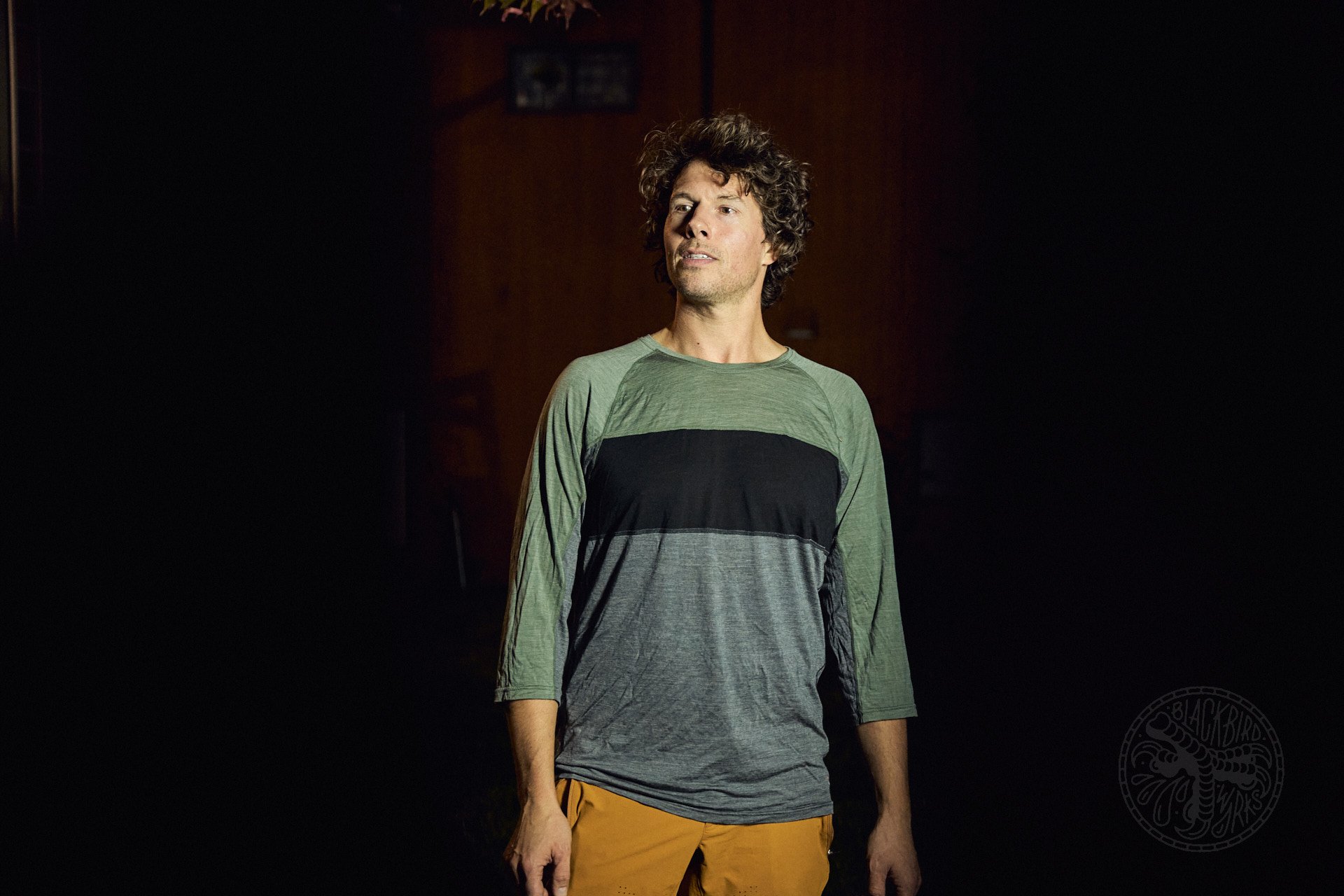
Smartwool Merino Sport Ultralite 3/4 Sleeve Tee
I've tried many merino wool jerseys over the past few years, though this one could very well be the best so far. From a durability and structure standpoint, merino wool is often blended with nylon - which happens to hold onto stink very well. Unfortunately, this negates one of the key characteristics of merino wool, which is bucking the funk. Many merino garments tout they are able to withstand near endless days of sweaty activity without getting stinky, but I'm sure the rapscallions I've shuttled with recently could tell the days I was indeed rocking a nylon blend.
Pete threw the Smartwool Merino Sport Ultralite 3/4 Sleeve Tee at me right before the dog days of summer arrived. It's easily the most thin feeling merino jersey I've donned, made of a 53% merino wool/47% Tencel blend. Tencel, a natural fibre derived from wood pulp, wicks moisture away quickly and doesn't hold onto disdainful odours like nylon will, and breaks down easier at the end of it's useful life. Warm or cool, merino wool is incredible at temperature management, but dries slower than synthetic fabrics. The Ultralite 3/4 jersey admittedly dries slower than synthetic offerings, but I actually appreciate the cooling which saturated fibres provide during hot days. Inversely, I was also able to stay warm on a ride during one of the (very) few recent rainfalls over the past few months.
The Ultralite 3/4 tee has a regular fit, but a word on that - this jersey fits big, and I needed to size down from a large (the size I wear 99% of the time) to medium. A slight drop hem in the back helps maintain coverage while in riding position. Offset shoulder seams are sewn so riders don't experience chafing from pack straps. Two small reflective elements will potentially help others see you during a commute, camera flash, or sneaking e-bikes out of the NSMB bunker.
This jersey checks nearly every box I'm looking for in a riding garment: amazing temperature management (warm or cool), thin for layering, doesn't hold on to stink, durable, and doesn't look too technical. If Smartwool made a plain black version, I'd buy five tomorrow.
-Graham Driedger
TheSmartwool Merino Sport Ultralite 3/4 Sleeve Tee retails for $84.99 CAD.

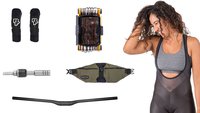

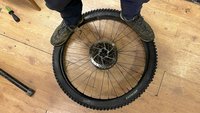

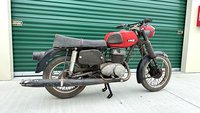



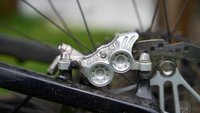
Comments
Andy Eunson
1 year, 7 months ago
We have Timber bells on our bikes. Great for busy valley trail rides or trails. The levels of Karen are great. Full Karen for busy trails, half Karen for slower less busy climbs and catatonic Kevin (Karen’s partner) for silent bliss.
Reply
Pete Roggeman
1 year, 7 months ago
Full marks for conversion to the Karen/Kevin scale.
Reply
Lornholio
1 year, 7 months ago
FYI you can easily mount a tube inside a Tannus tubeless insert (tube closer to the rim tape, pinning the insert against the inside of the tread) if plugs aren't up to the job. I stopped carrying a tube a few years back because plugs have always at least gotten me home, but when a broken spoke pieced my tape on the morning of a big day trip this summer I had no option but to use a friend's tube. It was a one lever plus strap operation and I'm back to carrying a tube + levers on anything except park days now.
Reply
roil
1 year, 7 months ago
I have the timber bell but recently got the granite cricket bell for my girlfriend's bike. It has the passive setting as well as a ringer like a traditional bike bell. Best of both worlds.
Reply
finbarr
1 year, 7 months ago
oh, that does seem nice. I like the timber bell but I do miss the ringer option.
Reply
Pete Roggeman
1 year, 7 months ago
That looks like a good option for sure. For trail use, I don't miss the ability to activate the bell manually, but of course for a bell that works for all bike types, the Cricket ticks all boxes.
Reply
ebsocalmtb
1 year, 7 months ago
Interesting suggestion for a bell. I do really like the timber bell and despite generally being annoyed by it on extended descents... the volume is helpful as we have a lot of high speed stuff where I live. My biggest complaint about it is that it hangs so low that it can be a danger to top tubes and just be a bit of a PITA to fit on the bars safety. Especially mounting it close to the stem on and the resulting TT clearance.
What I would really want is a timber bell, but if they rotated the assembly so that the bell sat tucked up and in front of the bar and the adjusting lever were clocked back towards the rider and under. It would make the usability of the lever while riding more cumbersome, but would for sure make it a better fit on certain bikes.
Still searching for the perfect bell and if that granite cricket bell is loud enough, it may be it. Guess I need to order one and give it a shot.
Reply
Pete Roggeman
1 year, 7 months ago
I listen to podcasts a lot when I'm on a solo ride and the bell is a bit non-stop, but I've gotten used to it. Of course, I don't run it for the whole ride, either.
As for top tube interference, that is a factor, depending on how many spacers you're running, however you can also run the bell out by your grips, in which case it won't ever scare your top tube. As well, when you run it outboard, it's easier to reach if you want to turn it on and off more often.
Reply
sjc115
1 year, 7 months ago
@ebsocalmtb: Revgrips makes a stem that has an optional integrated bell that can be silenced (https://revgrips.com/collections/stem/products/trail-bell-with-silencer-switch). It is completely out of the way as it is housed inside the stem. A bit pricey (a lot pricey, actually), but maybe worth consideration if you are looking for a clean cockpit.
Reply
roil
1 year, 7 months ago
> What I would really want is a timber bell, but if they rotated the assembly so that the bell sat tucked up and in front of the bar and the adjusting lever were clocked back towards the rider and under. It would make the usability of the lever while riding more cumbersome, but would for sure make it a better fit on certain bikes.
The timber works if you rotate the assembly so it's parallel to the ground. It doesn't have to be hanging straight down. Seems like it would solve all of your problems. For best results, remove the timber and flip its orientation so it's "backwards" on the bars and then rotate.
Reply
finbarr
1 year, 7 months ago
I agree about looking for good riding jerseys that don't look too technical. I pay the $$$ for the NF Dan Merino shirts because they look like normal t-shirts. It'd be nice to have more options for pure merino wool shirts that are just solid colours.
Reply
LurkeR010
1 year, 7 months ago
I ended up using Woolly shirts that are just solid colors. I end up wearing their long sleeve henley year round as a bit of brush protection for my arms. They are cheaper than NF, but are made in China if that matters to you. Avoid their ultralight garments though. They wear out quickly even if they're only used as an undershirt.
Reply
Pete Roggeman
1 year, 7 months ago
I've got a Dan Merino and love it, and I agree - a good merino tee (or Long-sleeved t) is hard to beat for almost all the riding I do. For warm weather riding a merino/tencel blend like the Smartwool up above is great because it'll wick/dry even faster than merino alone which is great in the summer - but give me 90-100% merino for the other three seasons.
Reply
Sethsg
1 year, 7 months ago
Would you guys consider doing a review on these pants? - https://www.wearfoehn.com/collections/mens-mountain-bike/products/mens-tobin-schoeller-mountain-bike-pants
They look like they are super high quality but they are also subdued enough looking that I would happily wear them all the time, unlike most MTB pants.
Reply
Jake Smith
1 year, 7 months ago
I love my Timber Bells, I have the 22.2 variants and it fits quite nicely next to my left brake lever in such a way that I can turn it on and off without much faff even while riding though some really chunky stuff. So heckin loud though, can make my ears ring a bit after a long chunky descent, but its volume does have a purpose.
Reply
Mammal
1 year, 7 months ago
Were all these reviews by the same person? I thought articles and reviews usually stated who tested/authored them?
Reply
Pete Roggeman
1 year, 7 months ago
Each author is credited at the bottom of each Gear Shot. Graham's name was omitted from the Smartwool GS until just now so I corrected it - thanks for the spot.
Reply
Mammal
1 year, 7 months ago
Gotcha, cheers.
Reply
THELEGENDMTB
1 year, 7 months ago
I have the timber bell and also tried the Cricket, they are by no means in the same category, the timber wins by a land slide with regards to sound. The cricket is barely useful as city bell, I live in Seattle, where a loud bell is always best. But on the trail the Cricket is blah.
I don't ride my mtb in the city, I have a dedicated city bike with a Spurcycle bell (loud). I sent the Cricket back after 1 day of city use.
Reply
Steven Hambleton
1 year, 7 months ago
I wish there were more open ended grips, especially Deathgrips, Supracush or Ergons so I can fit some LoamLab Counterpunch bar ends.
Reply
Agleck7
1 year, 7 months ago
The loam lab grips are great. Just run those
Reply
Steven Hambleton
1 year, 7 months ago
They're too small - I like a 34-35mm diameter.
Reply
araz
1 year, 7 months ago
My Ergon GA2 fat grips have open ends.
Reply
Steven Hambleton
1 year, 7 months ago
Interesting!
Reply
Tjaard Breeuwer
1 year, 7 months ago
Saw, file or drill…
I ran the OG Samurai tire plugger in my Ergon grips. Can’t remember how long and how, but it only took a few minutes to open the end of the grips.
Reply
Pete Roggeman
1 year, 7 months ago
You can cut the ends off of other grips so you can fit the LoamLab CP on there. I haven't done it myself yet but have heard from others who managed it without much trouble.
Reply
Please log in to leave a comment.